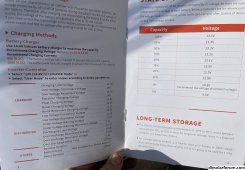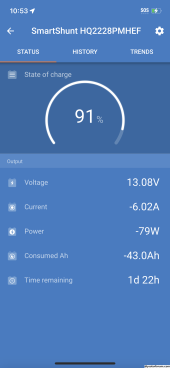Hi guys I’m hoping for some advice on diagnosing a problem with my RV set up.
Setup:
2x ampear time 200AH batters 12v
EpEver solar charge controller
4000w inverter charger
900W of solar
My EpEver died suddenly and I’m not sure why. I noticed when my batteries died and the BMS cut them off. I replaced it and charged the batteries back up.
I went to bed last night around 11 pm with 13.5v showing. The only 110v draw running were a phone charger, 2 led TVs that are off (so standby draw) and the lcd on the microwave. 12v draws included the fridge (on gas mode) and my CPAP drawing 80w.
6am my CPAP shuts down waking me up. The batteries are flat and in shutdown mode.
What gives? Last year I ran the whole system for nearly two days with virtually no solar input (due to weather) AND I was using 12v lighting. Nothing is more than 3 years old. The batteries are only about 1.5 years old. Both the inverter and EpEver are set to charge Lithium batteries. So did a battery take a crap? If so how do I tell? I would think even 1 200AH battery would hold up longer.
Thanks in advance
Setup:
2x ampear time 200AH batters 12v
EpEver solar charge controller
4000w inverter charger
900W of solar
My EpEver died suddenly and I’m not sure why. I noticed when my batteries died and the BMS cut them off. I replaced it and charged the batteries back up.
I went to bed last night around 11 pm with 13.5v showing. The only 110v draw running were a phone charger, 2 led TVs that are off (so standby draw) and the lcd on the microwave. 12v draws included the fridge (on gas mode) and my CPAP drawing 80w.
6am my CPAP shuts down waking me up. The batteries are flat and in shutdown mode.
What gives? Last year I ran the whole system for nearly two days with virtually no solar input (due to weather) AND I was using 12v lighting. Nothing is more than 3 years old. The batteries are only about 1.5 years old. Both the inverter and EpEver are set to charge Lithium batteries. So did a battery take a crap? If so how do I tell? I would think even 1 200AH battery would hold up longer.
Thanks in advance




